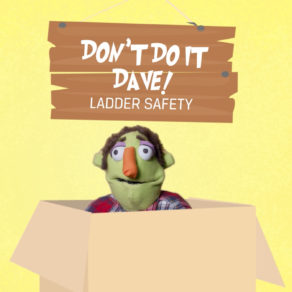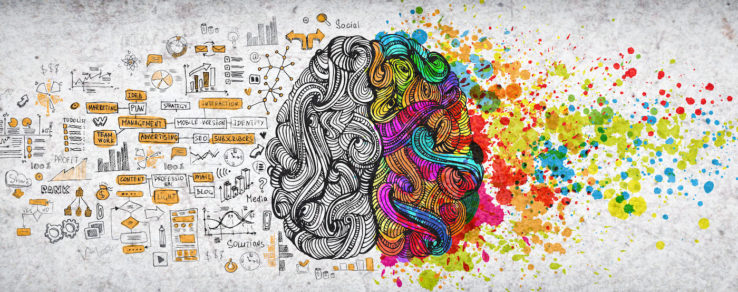Design plays a powerful role in your energy utility’s marketing strategy. From eye-catching emails to attention-grabbing social media posts, design elements can impact customer engagement and program participation. However, it’s not always easy to know how to improve the design of emails, web pages, social media posts and other marketing materials.
We sat down with Questline Digital Creative Director Joe Pifher — a marketer with two decades of digital design experience — to get his thoughts on best practices for energy utilities. Check out our Q&A below for his expert advice.
What are the best practices you recommend in email
design?
One best practice is to make sure your email is accessible to everyone and complies with ADA (Americans with Disabilities Act) design standards. With so many people using their phones to check their email, your design also needs to be mobile-friendly.
If you want to try new things in your design, you can always use an A/B test to see what works best with your audience. You can A/B test anything — subject lines, calls-to-action, hero images — though you should only test one element at a time. I also recommend running a Litmus test so you can see how the email will look on each platform. For example, Outlook on a PC will not show an animated GIF, but Outlook on a Mac will.
What design elements make an email easy to read?
Today’s
consumers don’t have time to read six paragraphs of copy. If possible, find
ways to keep your copy simple and don’t cram too much into one message. If you
do need to use a large amount of copy, find a way to break it up by using
icons, bullets, imagery or a call-out. These elements can help separate each
section. You don’t want your readers to get overwhelmed by giant blocks of
copy.
How do you choose a photo that resonates with energy
utility customers?
I
can’t say there is a formula for selecting the best photo. You have to pick an
image that is specific to the email and the story you’re telling. Regardless of
the topic, you want to find something that is going to grab your audience’s
attention, whether it’s a pop of color or an image that pulls at the heart
strings.
Often
I’ll alter or enhance a photo to heighten the impact. In an interior image, for
example, I’ll change a plain white wall to a bright color. Beyond color
correction, I’ll find a point of interest in the image and darken or blur around
it so your eye is drawn to that focus area.
You
also need to make your image relatable and reflect the demographics in your
region. You want to have diverse images that include different ages, genders
and ethnicities. If you’re coming from a place of authority, it might not be a
bad idea to have the subject of the photo look right at the camera, making eye
contact with the customer.
Should you use an animated GIF in an email or social
media post?
Whether
to use an animated GIF depends on a couple things. Timing is a big one. Making
a GIF takes a little more time than just supplying a static image. It’s also
important to know your audience. If most of your audience is on a PC using
Outlook, a GIF isn’t going to show up.
You
also want to think about how it will benefit your campaign. If a GIF is going
to help tell your story, then it makes sense to use one. As far as social media,
it’s always a good idea to use some form of movement to capture attention.
How can energy utilities improve their social media engagement?
Our
clients know that customers don’t think about their energy utility unless they
have to. That’s why you need to have social content that stands out. Think
about what you’d like to see when scrolling through your feed. Show consumers
that your energy utility is not just an afterthought — you’re relatable and
part of the community. Give them something that’s fun or helpful, like a
puzzle, video or interactive infographic.
It’s
also important to tell a story with social posts. Give your followers something
they don’t ordinarily see in their everyday life like a behind-the-scenes look
at your energy utility. Perhaps most important, remember to speak to a specific
segment of your audience. If you try to talk to everyone at once, you’re probably
talking to nobody.
What’s your take on emojis in subject lines?
I
think emojis are a great idea. In my personal email, I get hundreds of emails
each day and the ones with emojis catch my eye. Anything that’s going to help
an email stand out is beneficial.
If you do add an emoji to a subject line, make sure it’s at the beginning and not the end to ensure customers see it. You can even use emojis in emails to your business customers. You can use a typewriter, check mark or smartphone emoji to make it a little less whimsical. If you’re hesitant to use emojis in a subject line, run an A/B test to find out if a subject line with or without an emoji works best.
Do you have design recommendations for a
call-to-action (CTA)?
Keep
your CTA simple. Have a good call to action so your readers know why they are
clicking on the button and where it goes. Our data shows that a button always
performs better than a hyperlink. As far as color goes, I like using whatever
brand color we’re using for the hyperlinks or bold copy. Keep in mind, if you
have several blocks of copy, your readers may not scroll far enough to reach
the CTA button. That’s why I always recommend a button at the top and bottom of
a long email.
What are your thoughts on the use of white space in
design?
Just
like any other design element, the use of white space needs to have a purpose. If
you’re not giving readers’ eyes a place to rest, they aren’t going to take the
time to read your content. I can’t tell you the number of times I stopped
reading an article or landing page copy because of the lack of white space. White
space is a basic element of design — you need it in everything.
What do you recommend for energy utilities with small marketing budgets?
If your energy utility’s budget is too small to afford
professional tools like Adobe Creative Cloud, I would suggest finding
alternative options. There are many helpful sites for improving your content
and design, and many are free or very affordable.
Grammarly is great for writing, while Canva is an easy-to-use platform for creating social posts, infographics and more. You can learn how to use these apps through educational sources like Lynda. Through partnerships with public libraries in many areas, you can use your library card to get a free Lynda membership (that’s how I use it).
Keep in mind, doing creative work in-house will likely help with costs, but not always results. My best advice is to stop worrying about being unique in your marketing if your budget doesn’t allow for it. As much as my team loves creating custom campaigns, financially it doesn’t make sense for every energy utility. Consider using one of Questline Digital’s off-the-shelf campaigns to promote your programs. These campaigns can be personalized with your brand for a fraction of the price of a fully custom project. Plus, they were strategically created to meet the unique needs of energy utilities.
Learn how Questline Digital’s Creative team designs utility marketing campaigns that deliver results.


